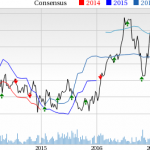NSE PSU Bank Index surged 30% on 25th October 2017 – the date when bank recapitalization of Rs 2.1 trillion was announced. God bless the investors who bought the public-sector banks on this date. Fast forward to 27th February and investors would have lost massive net worth in these stocks.
Loss in Market Capitalization of PSU Banks from 26th October 2017 to 27th February 2018
Source: ACE Equity
The healthy correction has led to these banks trading at attractive valuations. All the banks as mentioned in this table are trading below their ten-year median price/book value. Certain brokerage houses have even initiated a buy call on few of these stocks.
Now, there is a term in investing called Value Traps. Value traps are stocks that are trading at very cheap valuations. These stocks can trade cheap forever and never really recover in terms of stock price performance. There is a reason for this. And the reason is related to structural problems with the company.
The structural problem with public sector banks is the credit appraisal policy. In the greed of balance sheet growth and pressure from government, these banks have lent to stressed sectors such as power and iron & steel. The result- Gross Non-Performing Assets (GNPA’s) of public sector bank have shot up to 11.03% in FY17 as compared to 4.97% in FY15.













Leave A Comment